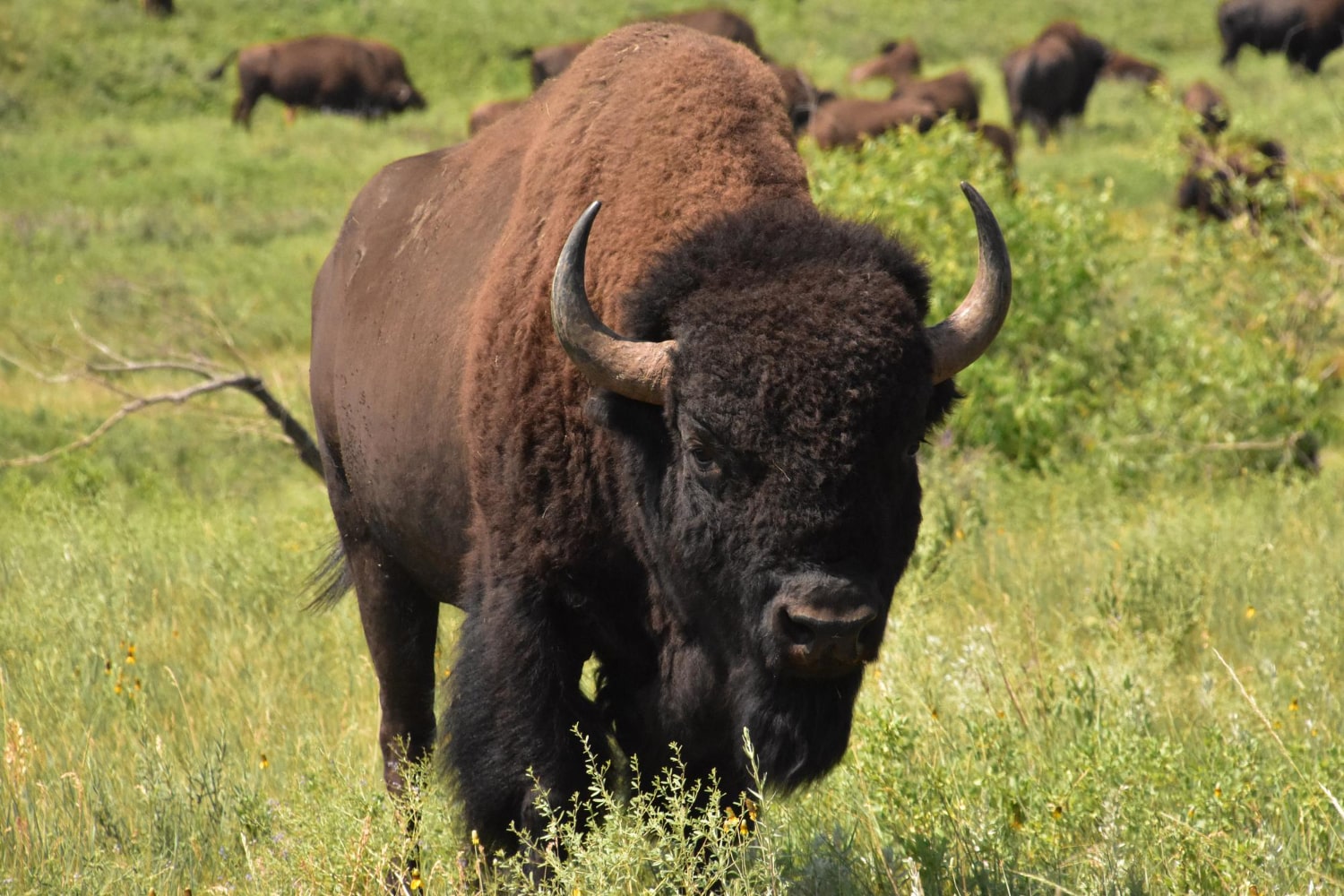Bison are majestic and powerful animals considered symbols of strength, endurance, and the spirit of the wild. Their history is closely connected with the culture of Native American peoples as well as with the struggle to preserve biodiversity. Bison inspired hunters, warriors, and artists, becoming part of legends and rituals. Interesting facts about these mammals reveal fascinating aspects of their life, biology, and importance to humans. In this collection, you will find many remarkable facts you might not have known.
- Bison are the largest land mammals in North America. An adult male can weigh over a ton, and the height at the shoulder can reach two meters. Despite their massive build, they can move quickly and confidently.
- Although bison are sometimes confused with buffalo, they are different species. True buffalo live in Africa and Asia, while bison are found in North America and Europe. The differences include horn shape, body structure, and the location of the hump on the back.
- American bison once roamed the prairies in enormous herds. Scientists estimate that their population may have exceeded 30 million individuals, but in the 19th century they nearly disappeared due to mass hunting.
- The European bison, also called the wisent, is considered the largest land mammal in Europe. It has a more elongated body and longer legs than its American relative, which helps it move through forested areas.
- Bison can run at speeds of up to 60 kilometers per hour. This ability allows them to escape predators or travel quickly in search of food. Their speed and strength often surprise those who see them for the first time.
- Despite their formidable appearance, bison are herbivores. They feed mainly on grasses, while in winter they can consume roots and twigs. Their diet depends on the season and the availability of food.
- Bison have a highly developed sense of smell. They can detect the scent of a predator or a human from several kilometers away. This ability helps them avoid danger and locate food.
- Bison live in herds that change depending on the season. In summer, females and calves form large groups, while males usually remain separate or form small bands. During the mating season, herds come together, and males engage in fierce battles.
- Bison horns grow throughout their entire lives. They are used not only for defense against predators but also in competition for females. Males often clash head-to-head in impressive contests of strength.
- Bison calves are born in spring and have reddish fur. Just a few hours after birth, they can follow their mother. Such quick adaptation is essential for survival in the wild.
- Although bison may appear calm, they can be very aggressive. There have been recorded cases of attacks on humans even in national parks when tourists approached too closely. This shows the need for caution when observing them.
- For Native American peoples, the bison was the source of everything necessary for life. Meat was used for food, hides for clothing and shelter, and bones for tools. The bison also held sacred significance in many rituals and legends.
- In winter, bison use their hooves to dig through snow to reach grass. They are well adapted to harsh climates and can withstand very low temperatures. Their thick fur and layer of fat protect them during cold months.
- Bison produce loud bellows that can be heard from long distances. This vocalization is used for communication, warning of danger, or demonstrating strength during the mating season. Male calls are particularly powerful and deep.
- The largest wild population of American bison lives in Yellowstone National Park in the United States. Here they are protected and considered a symbol of the nation’s natural heritage. Tourists from around the world visit to see them in their natural habitat.
- European bison were almost completely exterminated in the 20th century. Thanks to the efforts of zoologists and reintroduction programs, the species was saved, and today they can be found in reserves in Poland, Belarus, and Ukraine.
- Bison can live up to 20 years in the wild. In captivity, their lifespan is usually longer due to care and protection from predators. However, even in natural conditions, they are well adapted and remain strong animals.
- Bison fur is thick and warm. In the past, it was used to make blankets and clothing that were durable and long-lasting. This feature made bison especially valuable to people.
- Bison play an important role in ecosystems. They help disperse plants, fertilize soil, and maintain natural balance. Their activities affect the flora and fauna of prairies and forests.
- Bison appear on the coats of arms of several U.S. states. They became a national symbol of strength and renewal, as after being nearly exterminated, they managed to return to the wild.
Bison are not only part of wildlife but also a living embodiment of history and culture. Interesting facts about these animals demonstrate how unique they are and how important they are to ecosystems and humans. Incredible facts about their life, behavior, and connections with people prove that bison deserve special protection. Fascinating facts about these giants confirm their role as a symbol of harmony between humans and nature.





